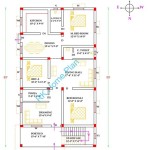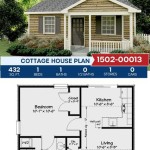In-House Plan Meaning
The term "in-house plan" encompasses a range of strategies and practices within organizations, often referring to internal initiatives or processes that are managed and executed by the company's own staff and resources. This approach contrasts with outsourcing, where tasks or projects are delegated to external vendors or service providers. In-house plans represent a strategic choice for organizations seeking greater control, efficiency, and specialized expertise within their operations.
Understanding the Concept
An in-house plan can be applied to diverse areas within a company, including but not limited to:
- Marketing and Advertising: Developing and executing marketing campaigns, managing social media presence, creating content, and handling public relations activities internally.
- Product Development: Researching, designing, and developing new products or services within the organization's own facilities and teams.
- Software Development: Building and maintaining software applications, websites, and internal systems using internal software engineers and developers.
- Human Resources: Managing recruitment, onboarding, training, compensation, benefits, and employee relations in-house.
- Legal and Compliance: Handling legal matters, compliance audits, and regulatory reporting within the organization's legal department.
In each of these areas, an in-house plan implies that the organization chooses to manage and carry out the activities using its own resources, rather than relying on external parties for these services.
Advantages of In-House Plans
Adopting an in-house approach offers several potential advantages for organizations:
1. Increased Control and Ownership
By handling operations internally, organizations gain greater control over the processes, decision-making, and outcomes. This allows for greater flexibility, adaptability, and responsiveness to changing market demands or internal needs.
2. Enhanced Security and Confidentiality
In-house plans often offer improved security and confidentiality for sensitive data and intellectual property. This is particularly relevant for areas like software development, product design, or legal matters, where external partners might pose risks to sensitive information.
3. Potential Cost Savings
While initial setup costs for in-house teams may be higher, organizations can achieve cost savings in the long run by avoiding ongoing outsourcing fees. This can be particularly beneficial for activities that are recurring or require ongoing maintenance and support.
4. Development of Internal Expertise
Implementing in-house plans fosters the development of internal expertise and knowledge within the organization. This can enhance the company's capabilities, create a more skilled workforce, and reduce reliance on external consultants or service providers in the long term.
Challenges of In-House Plans
Despite the advantages, implementing in-house plans also presents some challenges:
1. Initial Setup Costs
Building in-house teams and developing internal processes can require significant upfront investments in infrastructure, equipment, training, and personnel. This can be a barrier for smaller organizations or those with limited budgets.
2. Potential for Time Delays
Developing and managing in-house capabilities can take time and effort. This can lead to delays in launching new products or services or completing projects, especially when internal staff are still developing expertise in the required areas.
3. Limited Scalability
In-house teams might struggle to handle sudden surges in workload or demands. This can limit the organization's ability to scale operations quickly or respond effectively to unexpected growth or market changes.
Conclusion
The decision to implement in-house plans versus outsourcing depends on a variety of factors, including the organization's size, budget, industry, and specific needs. By carefully considering the potential benefits and challenges, organizations can make informed choices that align with their long-term strategic objectives.
Home Plan Buyers Learn How To Read A Floor Blueprint Blog Eplans Com
Home Plan Buyers Learn How To Read A Floor Blueprint Blog Eplans Com
Home Plan Buyers Learn How To Read A Floor Blueprint Blog Eplans Com
Floor Plan Symbols Guide Buildi
Meaning Of Letters On House Plan Japan Guide

Archimple What Is A Split Floor Plan Know About Spacing And Functional Home

Your Guide To House Plans With Screened In Porches Houseplans Blog Com

Floor Plan Design Tutorial

Floor Plan Symbols Guide Buildi

New London 7037 4 Bedrooms And 3 5 Baths The House Designers








